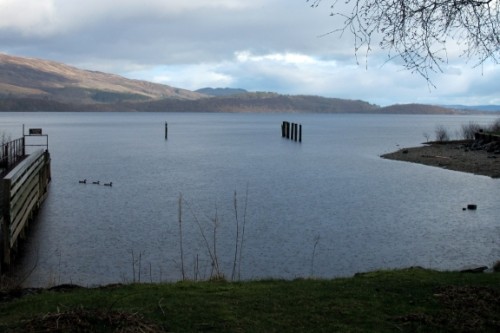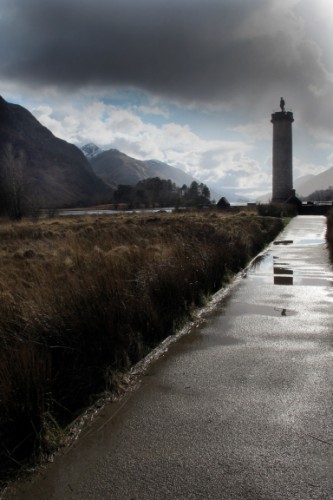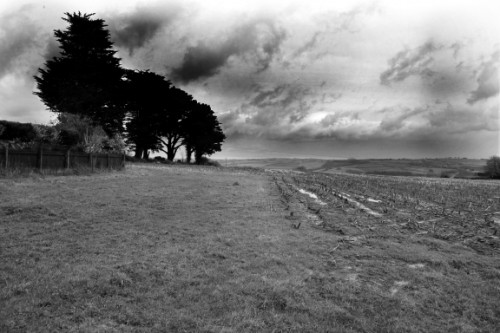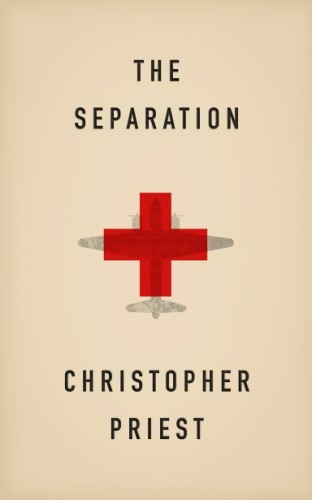If you have not bought a computer printer this year, an internet router or modem, a television set, a hair-dryer, a vacuum cleaner – all is well. If you are thinking of replacing the one you have, read on!
Sometimes the law changes inconspicuously: you hear something on the news, and you understand it and take it in, but it doesn’t have the press of urgency and so within a short time you tend to forget it. The consequence of this kind of forgetfulness has just happened to us.
A couple of years ago we bought a new coffee filter machine. We found one on special offer in Morrisons: £10 for a basic unbranded model. It worked swiftly and made good coffee, and with its large pot (which the manufacturers call a ‘carafe’) we had something that did exactly what we wanted it to do. In short, it sat quietly in the kitchen, exhaling a pleasant smell and from time to time muttering little contented noises. Hot coffee was on hand all day.
Last week it brewed its final pot, the heating element under the hot plate at last burning out. We ordered a replacement from Amazon. Familiar brand name, more or less basic design. (Not £10, though.) It arrived safely the next day. Unsuspecting of an event that was to waste our time for the next couple of days, we set it up, ran clean water through it, then made a pot of coffee.
Coffee filter machines are basic technology, whose simplicity is quickly grasped by anyone who uses them. The water is drawn down from a small reservoir, passes through an insulated heating element in the base, and is then expelled upwards to a nozzle where it drips on to the coffee grounds in a filter beneath. The fresh coffee percolates into the carafe, where it is kept warm by the same heating element under the hot plate. The new machine did all this, but we couldn’t help noticing that it had a number of extra buttons, a timing device, special lights, etc.
While we were still looking at the manual the main special light went out. The hot plate began to cool. We turned it on again. Then we noticed that our radio had stopped working. When we moved the coffee machine away the radio started working again. The new coffee machine was clearly emitting not pleasant smells and little contented noises, but a death-ray of radio interference. We were still trying to find somewhere we could have both appliances (in a kitchen, available free surfaces close to a power socket are not plentiful) when the coffee machine turned itself off again.
Amazon has an excellent, hassle-free returns service, which I recommend.
The next day we went into our local market town to find a replacement, one we could look at in the shop to make sure it wasn’t afflicted with the same level of high-tech irritation. The only problem was that none of the four shops we visited (including a huge general-supplies warehouse on the edge of town) had any in stock. This was surprising – we had assumed filter machines were common consumer products. We ended up driving a further distance to Barnstaple, where there is a branch of Currys. They had two models on sale: we bought the simpler, cheaper one. This too had extra buttons, a digital clock, LEDs that were said to change colour.
We ran fresh water through it, then made a pot of coffee. The radio continued to work, but a few minutes later the filter machine turned itself off.
It was only then that a faint, distant memory arose of some EU-inspired legislation change. A visit to Google confirmed the worst (here and here). From the beginning of 2015, many electric or electronic devices aimed at the consumer market have to turn themselves off if they are not used after a certain, fixed period of time. The reason: an urge to conserve energy, not in itself a bad thing, but because the new rules are aimed at consumers there is nothing we can do about it. There is no discussion, nothing to argue about – climate change is threatening the world. Things are being made differently now.
Governments, local authorities, big corporations are of course free to continue to waste energy however they like. A visitor to any big city after dark will see a blaze of lights, signs, displays, engines running, things being cooked, devices turning, vehicles rushing around. A night flight across North America or Europe will reveal the glare of city lights, which are sometimes so bright they dazzle even from five miles above. Hundreds of thousands of aircraft fly constantly above North America and Europe and everywhere else, millions (perhaps now billions) of cars and other vehicles gulp down fuel every minute of the day. There’s practically no point in trying to list the many ways in which energy is wasted constantly, by everybody, everywhere. The present British government is drawing back from supporting renewable energy sources, and now plans to ruin the environment of the countryside forever with plans to frack in quest of two or three years’ worth of “independent” fossil energy. For these reasons, our little one-kilowatt coffee maker has to turn itself off to prevent global warming.
My next modem, should the current one expire, will turn itself off if “no main task is performed”. Our vacuum cleaner, which noisily, swiftly and efficiently sucks up the usual weekly detritus of dust, bogies, cat hair, etc., will have to be replaced one day by an “eco-friendly” low power machine, which will take twice as long to do the same job and no doubt use up more electricity in the process. I have spent the last two weeks trying to find a decent light-bulb for my reading lamp, one which is bright enough to read a book by, but does not cast a pattern of variegated illumination on the page. I did not realize the difficulty of buying suitable light sources was a symptom of the same cause that now prevents me from having a supply of hot coffee all day: the meddling, inappropriate urge of some mad bureaucrat in Brussels, unresisted by a compliant British government, who wants to control how ordinary people use the precious fossil resources of the world.
This was of course why we had to search around Devon for a shop that carried even a small stock of these now more or less unsuitable coffee machines – people don’t want to buy them any more. And it was also, I now realize, why Morrisons were selling off their old stock at knockdown prices last year. I wish we had bought ten of them.
 Same book, same publication date (September 2016), two different approaches. The one at top is Gollancz’s UK edition; the other is Titan’s edition for the USA. I have been waiting a long time for the Gollancz cover to be finalized, partly my fault because at first I said I liked the original draft, then changed my mind. I was away travelling for much of May, and assumed things would happen while I was away. At last, mid-June, I think these two are now the ones.
Same book, same publication date (September 2016), two different approaches. The one at top is Gollancz’s UK edition; the other is Titan’s edition for the USA. I have been waiting a long time for the Gollancz cover to be finalized, partly my fault because at first I said I liked the original draft, then changed my mind. I was away travelling for much of May, and assumed things would happen while I was away. At last, mid-June, I think these two are now the ones.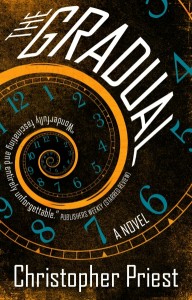 of visual imagination, but whenever I try to reconceive something I have written in visual terms I find myself irresistibly drawn to the mental images I formed when actually writing. As these are usually imprecise as to detail (they are a kind of imagined soupy mix of ideas and characters) they are not much help.
of visual imagination, but whenever I try to reconceive something I have written in visual terms I find myself irresistibly drawn to the mental images I formed when actually writing. As these are usually imprecise as to detail (they are a kind of imagined soupy mix of ideas and characters) they are not much help.